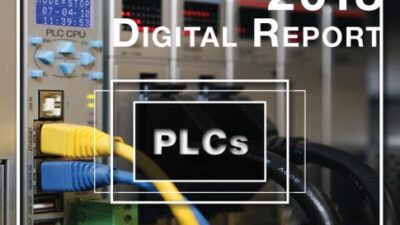Waste Management joins with Inentec to develop and deploy plasma gasification facilities. Refuse is superheated to as high as 20,000 °F, rearranging the molecular structure, making ultra-clean, synthesis gas (syngas) from carbon-based materials. Link to process video.
Waste Management and Inentec LLC have announced the formation of S4 Energy Solutions LLC, a joint venture to develop, operate, and market plasma gasification facilities using Inentec’s Plasma Enhanced Melter (PEM) technology. The joint venture is expected to process waste from the country’s increasingly segmented commercial and industrial waste streams to produce a range of renewable energy and environmentally beneficial fuels and industrial products, as well as to generate electricity in the tightly controlled process.
S4 Energy Solutions’ initial focus will be to process medical and other segregated commercial and industrial waste streams. The company’s future commercialization plans may also include processing municipal solid waste once the technology has been demonstrated to be economical and scalable for such use.
“We see waste as a resource to be recovered, and this joint venture with the PEM system will help Waste Management’s commercial and industrial customers maximize high energy value waste streams to generate valuable renewable energy products based on their unique environmental and logistical considerations,” says Joe Vaillancourt, managing director at Waste Management. “With Inentec, Waste Management has found a partner with a promising technology as well as strong management, and research and development capabilities to address the hurdles to implementing a new technology.”
With the PEM process, waste materials are fed into a closed chamber similar to an electric arc furnace found in a steel mill. The refuse is superheated to temperatures of between 10,000 and 20,000 °F. The intense heat of the plasma process rearranges the molecular structure of the waste, transforming carbon-based materials into an ultra-clean, synthesis gas (syngas). Watch a video of the process . Syngas typically contains a mix of CO, H 2 , and CO 2 , and can be used as a substitute for natural gas, or converted to transportation fuels such as ethanol and Diesel.
“The technology was developed by Inentech out of work that was developed at the Plasma Fusion Center at MIT and the Pacific Northwest National Lab in Richland, WA,” says Jeff Serma, president and chief executive officer of S4 Energy Solutions. “The technology combines two heating sources and three different technologies into one. The ionized gas is formed by an electric arc, like an arc furnace used in a scrap steel mill. Our technology generates this plasma on top of a molten bed of glass, heated using resistive heaters. Those two systems are very efficient, and put the heat right where it can do the most work and convert waste material into synthesis gas. Directly above that plasma chamber is a downdraft gasification unit.
Serma says one key benefit of the high temperature control process is that it generates none of the byproducts associated with lower temperature gasifiers, such as light oils, carbon black, and tars, which are problematic for the downstream gas cleaning processes and interfere with converting the syngas into another product. Moreover, such temperatures prevent formation of toxic gases, such as dioxins and furans, even when using highly chlorinated plastic feedstocks. Inorganic products in the waste stream dissolve into the glass bath and can be recovered for other purposes.
Making such technologies commercially viable depends on the ability to scale production to levels that areincreasingly segmented. Some are hard to dispose of economically, and this technology allows us greater flexibility to treat a wide variety of waste materials.”
Together with Waste Management’s other renewable energy initiatives, this joint venture will move the company toward meeting two of its sustainability goals, doubling its renewable energy production to provide enough power for the equivalent of two million homes by 2020, and investing in emerging technologies for managing waste.
Peter Welander, process industries editor Control Engineering Register here .


